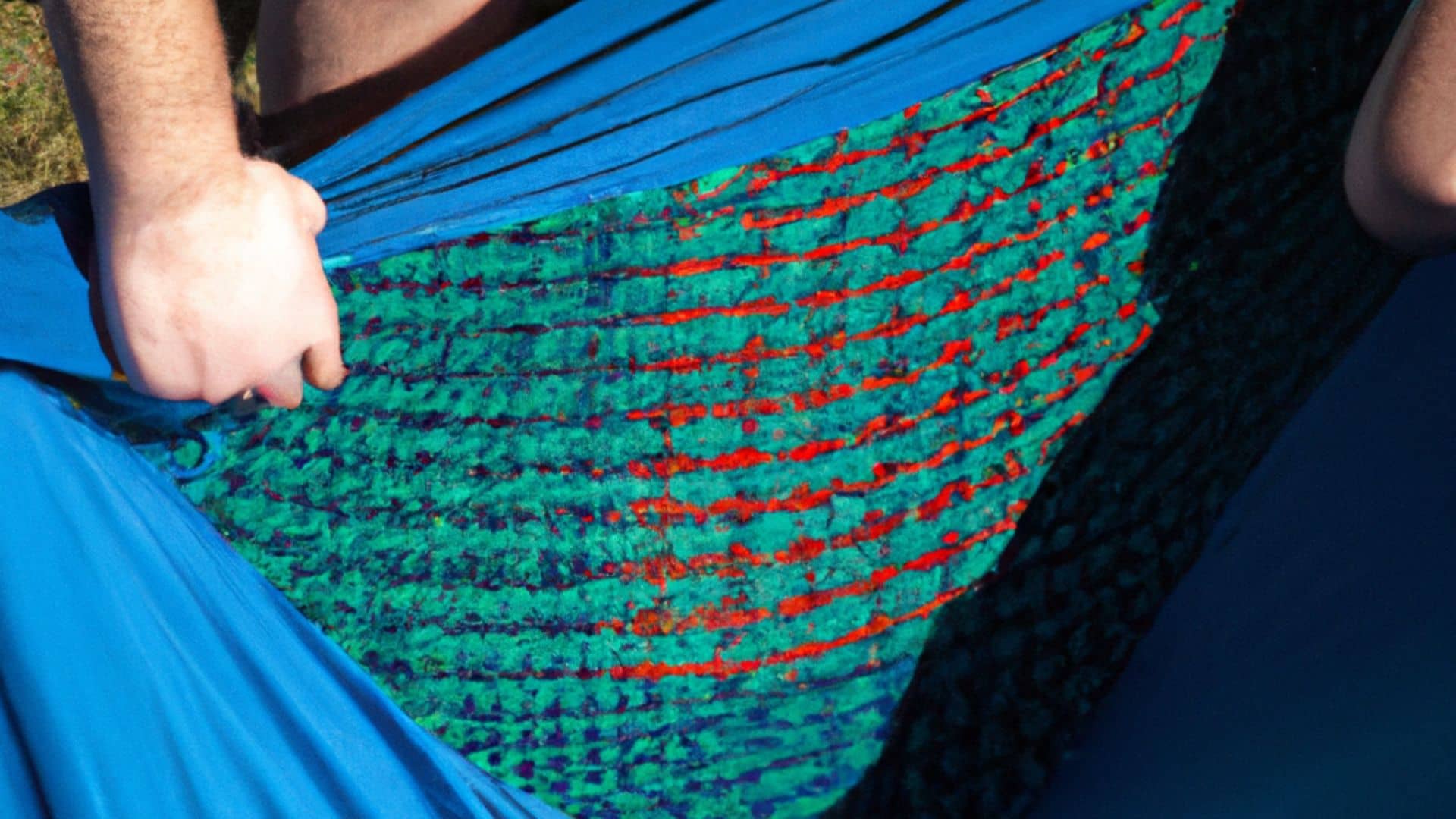Hammock tents are a great way to enjoy the outdoors while staying comfortable and dry. They can be used in a variety of settings, from backyards to camping trips. Hammock tents are easy to set up and take down, and they offer a variety of features that make them an ideal choice for any outdoor activity.
- Hang two hammocks side by side from an overhead structure using rope or straps
- Anchor the bottom corners of the hammocks to the ground with stakes or heavy objects
- Drape a tarp over the top of the hammocks, extending it outwards to create walls and a roof
- Secure the edges of the tarp to the ground with more stakes or heavy objects
DIY Camping Hammock
Can a Hammock Be Used As a Tent?
Hammocks have been around for centuries and were originally used as beds. Nowadays, hammocks are often used for recreation, but can also serve as a form of camping shelter. So, can a hammock be used as a tent?
The answer is yes! A hammock can make a great alternative to a traditional tent, especially if you’re looking for something lighter and more compact. Here are some things to keep in mind if you’re considering using a hammock as your main camping shelter:
1. Make sure you choose the right size. Hammocks come in all different sizes, so it’s important to select one that will be large enough to comfortably accommodate you (and maybe even another person).
2. Consider your sleeping setup. You’ll need to think about how you’ll arrange your sleeping bag and other gear inside the hammock. It’s often easiest to use an underquilt for insulation underneath and then add a top quilt or blanket on top.
3. Be aware of the weather conditions. If it’s going to be cold or wet outside, you’ll want to make sure that your chosen campsite has adequate tree coverage so you can stay dry and protected from the elements. In addition, windy conditions can make it difficult to keep your hammock secure, so it’s important to take this into account when planning your trip.
Read also: How to Hang a Hammock Tent
Is a Tent Warmer Than a Hammock?
It’s difficult to say definitively whether a tent or a hammock is warmer, as there are many factors that can affect the temperature inside each. However, generally speaking, a tent is likely to be warmer than a hammock in colder weather conditions, as a tent provides more insulation from the elements. Tents typically have a closed-off space that can be sealed against wind and cold air, which helps to keep the interior warmer. Tents can also have features such as insulation or a rainfly, which can further enhance their ability to retain heat.
In contrast, a hammock is an open-air sleeping arrangement that provides less protection from the elements. While hammocks can be equipped with insulating pads and sleeping bags to keep you warm, they are still more exposed to the elements than a tent would be. That being said, in warmer weather conditions, a hammock can be a cooler and more comfortable sleeping arrangement than a tent, as it allows for better ventilation and airflow. Ultimately, the choice between a tent and a hammock will depend on your specific needs and the weather conditions you’ll be facing.
How Much Fabric Do I Need to Make a Hammock?
The amount of fabric you’ll need to make a hammock will depend on a few factors, such as the size of the hammock, the type of fabric you’re using, and the desired level of comfort and support.
A basic rule of thumb is that you’ll need about 2 yards (1.8 meters) of fabric per hammock. This assumes a standard hammock size of about 4.5 feet wide by 9 feet long (1.4 meters by 2.7 meters). However, if you want a larger or more luxurious hammock, you’ll need more fabric. It’s important to choose a fabric that is strong and durable enough to support your weight and withstand the elements. Common materials used for hammocks include nylon, polyester, and cotton canvas. You’ll also need rope or webbing to attach the hammock to trees or other supports.
If you’re making a hammock from scratch, it’s a good idea to consult a detailed tutorial or pattern to ensure that you have the correct amount of fabric and other materials. Additionally, it’s important to follow safety guidelines when hanging a hammock to avoid injury.
What is the Best Size Tarp for a Hammock?
There is no definitive answer to this question as it depends on a number of factors, such as the size and weight of your hammock, the weather conditions you anticipate using it in, and your personal preferences. That said, most hammocks come with a built-in tarp that is typically between 9 and 11 feet long. Some campers prefer to use a larger tarp that covers their entire campsite, while others find that a smaller tarp placed just over their hammock is sufficient. Ultimately, it is up to you to decide what size tarp will work best for your needs.
How to Make a Tent Out of Plastic Wrap!
Assuming you would like a blog titled “How to Make a Tent Out of Plastic Wrap”: Did you know that you can make a tent out of plastic wrap? It’s true! All you need is a roll of plastic wrap and some basic supplies. Here’s how to do it: First, find a flat surface on which to build your tent.
Spread out the plastic wrap and tape down the edges. Then, use sturdy objects like chairs or tables to prop up the sides of the plastic wrap. Make sure the object you choose is tall enough to allow you to stand up inside the tent. Now comes the fun part: decorating! You can use markers, stickers, or even paint to personalize your new tent. Let your creativity run wild!
Once you’re done, invite some friends over and have a sleepover inside your very own DIY creation.
Conclusion
In conclusion, making a hammock tent can be a fun and rewarding DIY project for outdoor enthusiasts. By following the steps outlined in a comprehensive guide or tutorial, you can create a comfortable and versatile sleeping arrangement that is perfect for camping, hiking, or backyard lounging. When making a hammock tent, it’s important to choose durable materials, follow safety guidelines, and pay attention to details such as seams, knots, and tension points. With some patience and creativity, you can customize your hammock tent to meet your specific needs and preferences, and enjoy a cozy and relaxing outdoor experience.

